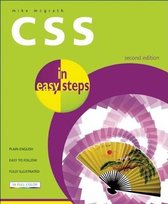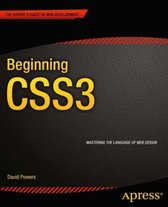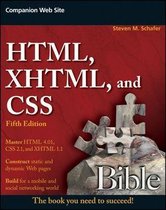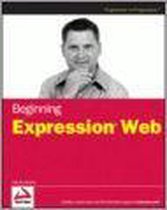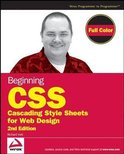Beginning Css Cascading Style Sheets For Web Design
Afbeeldingen
Sla de afbeeldingen overArtikel vergelijken
Uitgever: John Wiley & Sons Inc
- Engels
- Paperback
- 9780470096970
- 12 juni 2007
- 656 pagina's
Samenvatting
Beginning CSS: Cascading Style Sheets for Web Design, Second Edition covers all the details required to combine CSS with HTML, XHTML, or XML to create rich, aesthetically powerful designs. Throughout the book, youll focus on combining CSS with XHTML specifically because XHTML is the standard hailed by Internet standards bodies as the successor to HTML and the present and future of website design. CSS and XHTML allow a web document to be presented with less code, resulting in a significantly smaller file size and greatly increased ease of maintenance. CSS also enables the presentation of a web document to be centralized, which allows for the look and feel of an entire website to be written and centralized in one or a few simple documents, which makes updating a website a breeze. With only a few simple edits to a single document, the look and feel of an entire website can be completely changed.
By using modern standards like CSS and XHTML, you can drastically reduce the cost of building and maintaining a website when compared to legacy HTML-only pages. You can also greatly reduce the amount of physical bandwidth and hard disk space required, resulting in immediate long-term benefits for any website.
This book also discusses how to style XML documents with CSSXML being a more advanced markup language with multipurpose applications. XML will play an increasingly larger role in the production of XHTML documents in the future.
This second edition of Beginning CSS features a near-complete overhaul of the content from the first edition. Changes based on what readers had to say about the first edition helped to create the most comprehensive introduction on CSS available on the market. Throughout this book, you see CSS broken down into simple examples that focus on a single concept at a time. This allows you to better understand how and why something works, since you aren't presented with a lot of irrelevant code, and you can better see the bits and pieces that come together that make something work. While these examples may not be particularly pretty, they are extremely valuable learning tools that will help you master cascading style sheets.
To enhance the learning experience, most of the source code examples are presented in syntax-colored code, a special feature in this book. Syntax coloring is a feature that you commonly see in fancy development software, such as Zend Studio (used to develop PHP), or Microsoft's Visual Studio (used to develop ASP, C#, and so on), and other software used by professional programmers every day. Syntax coloring is used in these software suites to make programming easier and more intuitive, and it offers tremendous benefits in teaching as well. It allows you to see what the different bits and pieces are in source code, since each of the different bits and pieces has a different coloring to identify its purpose. It helps you to distinguish the building blocks of code mor
Productspecificaties
Inhoud
- Taal
- en
- Bindwijze
- Paperback
- Oorspronkelijke releasedatum
- 12 juni 2007
- Aantal pagina's
- 656
- Illustraties
- Nee
Betrokkenen
- Hoofdauteur
- Richard York
- Hoofduitgeverij
- John Wiley & Sons Inc
Overige kenmerken
- Editie
- 2nd Revised edition
- Verpakking breedte
- 189 mm
- Verpakking hoogte
- 32 mm
- Verpakking lengte
- 233 mm
- Verpakkingsgewicht
- 1080 g
EAN
- EAN
- 9780470096970
Je vindt dit artikel in
- Categorieën
- Taal
- Engels
- Boek, ebook of luisterboek?
- Boek
- Studieboek of algemeen
- Algemene boeken
- Beschikbaarheid
- Leverbaar
Kies gewenste uitvoering
Prijsinformatie en bestellen
De prijs van dit product is 29 euro en 69 cent. Dit is een tweedehands product.Ref3918
- Bestellen en betalen via bol
- Prijs inclusief verzendkosten, verstuurd door BAY EXPRESS
- 30 dagen bedenktijd en gratis retourneren
Alle bindwijzen en edities (2)
-
29,691 - 2 weken
Levertijd
We doen er alles aan om dit artikel op tijd te bezorgen. Het is echter in een enkel geval mogelijk dat door omstandigheden de bezorging vertraagd is.
Bezorgopties
We bieden verschillende opties aan voor het bezorgen of ophalen van je bestelling. Welke opties voor jouw bestelling beschikbaar zijn, zie je bij het afronden van de bestelling.
Tooltip -
25,341 - 2 weken
Levertijd
We doen er alles aan om dit artikel op tijd te bezorgen. Het is echter in een enkel geval mogelijk dat door omstandigheden de bezorging vertraagd is.
Bezorgopties
We bieden verschillende opties aan voor het bezorgen of ophalen van je bestelling. Welke opties voor jouw bestelling beschikbaar zijn, zie je bij het afronden van de bestelling.
Tooltip
Rapporteer dit artikel
Je wilt melding doen van illegale inhoud over dit artikel:
- Ik wil melding doen als klant
- Ik wil melding doen als autoriteit of trusted flagger
- Ik wil melding doen als partner
- Ik wil melding doen als merkhouder
Geen klant, autoriteit, trusted flagger, merkhouder of partner? Gebruik dan onderstaande link om melding te doen.


